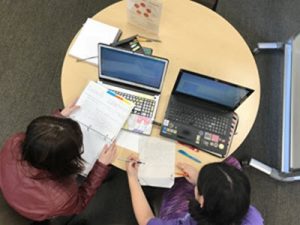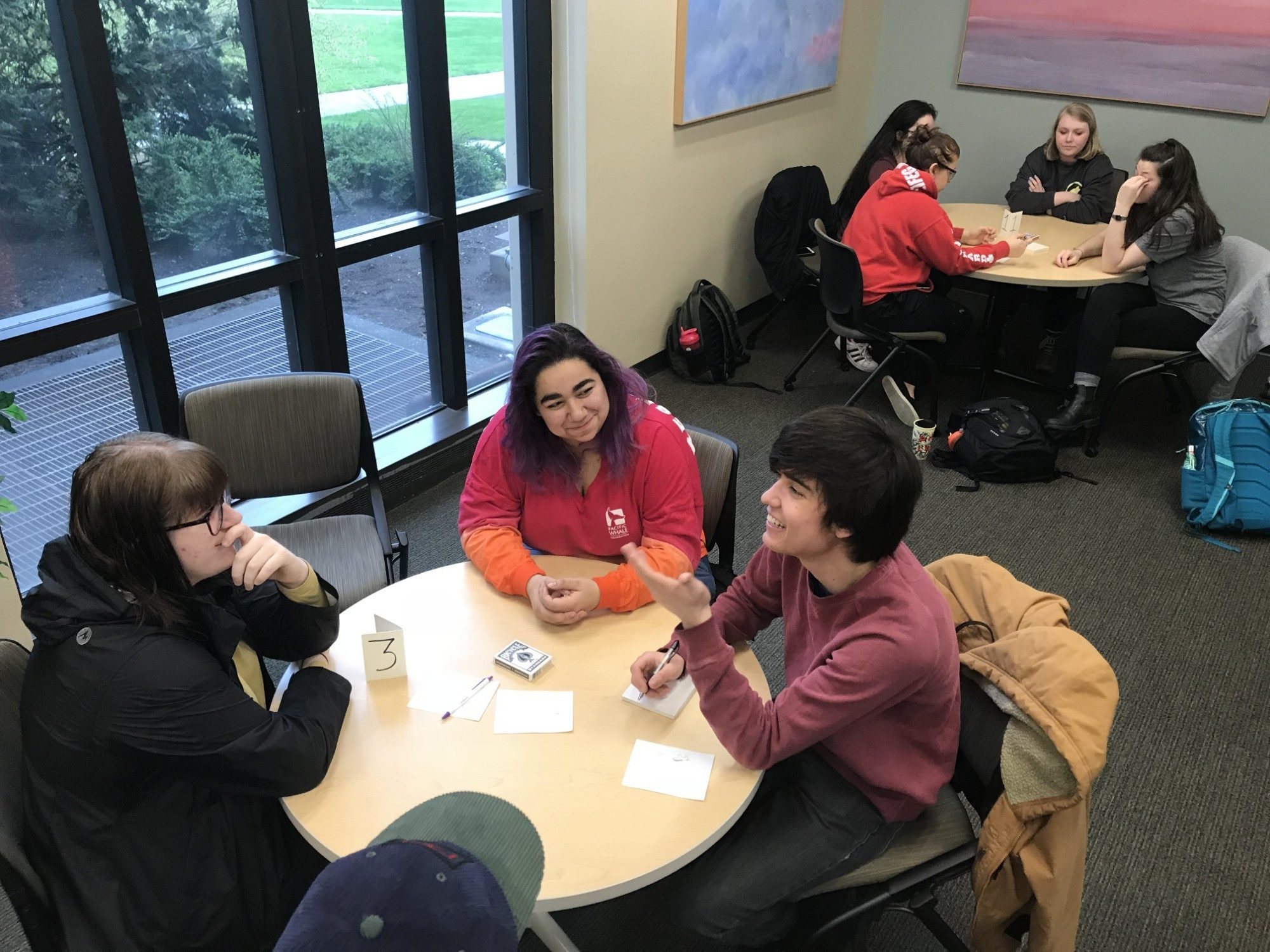Revisiting Bloom’s Taxonomy
In the 1950’s Benjamin Bloom and other researchers collaborated to create what is known as Bloom’s Taxonomy of cognitive processes. This has been revised over the years and includes today six cognitive dimensions:
- Remember: recall facts and basic concepts (e.g., define, list, state)
- Understand: explain ideas or concepts (e.g., describe, explain, summarize)
- Apply: use information in new situations (e.g., solve, complete, change)
- Analyze: draw connections among ideas (e.g., contrast, categorize, connect)
- Evaluate: justify a stand or decision (e.g., criticize, defend, prioritize)
- Create: produce new or original work (e.g., design, modify, write)
The accompanying verbs can be used to develop and organize learning goals and objectives for our curricula, courses, and daily lesson plans. Many UP faculty already use Bloom’s Taxonomy as a guide for planning, but we can enhance the use of Bloom’s Taxonomy by considering our objectives through the lens of knowledge dimensions that Anderson and Krathwohl added to the taxonomy in 2001. The four dimensions are:
- Factual knowledge (basic elements to learn in the discipline)
- Conceptual knowledge (interrelationships between basic elements within a larger context)
- Procedural knowledge (methods in the discipline)
- Metacognitive knowledge (awareness of how learning work in relation to one’s self)
Anderson and Krathwohl developed a matrix for combining cognitive processes and knowledge dimensions that can be adapted when planning courses and lessons. As faculty, we can adapt this matrix in our own lesson planning. Here’s an example from a 300-level applied linguistics course that I teach in the Department of International Languages and Cultures.
Basic concept: Individual differences in language learning
Knowledge Dimension: Factual knowledge
Bloom’s Taxonomy Cognitive Process: Remember (Related actions verbs: define, list, state, recall, identify)
Learning Goal: Students can accurately define individual differences and list examples.
Assessment: Students take a low-stakes quiz in which they define individual differences and provide examples they recall from the reading and group work activity.
Learning Experiences:
- Students read section on individual differences in How Languages are Learned respond to reading prompts before class.
- In class, students work in groups to identify individual differences in written profiles of learners and present their findings.
Intersecting with multiple knowledge dimensions
As faculty, we can also run concepts and theories we teach through both multiple knowledge and cognitive process dimensions as we plan instruction. Let’s take, for example, the social cultural theoretical perspective of second language acquisition from the same applied linguistics course
Factual dimension / Remember
Instructor provides learning experiences so that students practice recalling definitions of terms and characteristics and elements of the theory.
Conceptual dimension / Understand
Students participate in learning experiences that guide them to start explaining principles and models of the social cultural perspective. It’s important to note that at this level, the students are not just restating an author’s or instructor’s explanation; that would be remembering. Rather, they are using concepts, terms, and paraphrasing to explain the concept or theory.
Procedural dimension / Analyze
Eventually, students point out passages in a research text that indicate the linguistics researcher is writing from the social cultural perspective of second language learning. They are using their knowledge of the theory as an analytical tool.
Metacognitive dimension / Apply
Finally, the instructor can work with students to develop and apply motivational and language learning strategies that are based on a social cultural perspective of second language learning.
The above processes can also be reorganized into a class lesson planning tool.
Application in your teaching
The combination of Bloom’s Taxonomy and knowledge dimensions create a powerful approach for your faculty toolbox in support of our efforts to provide the excellent undergraduate education opportunities to our students. For more about deploying Bloom’s Taxonomy and the four dimensions of knowledge, check out Laurie Richlin’s Blueprint for Learning: Construction College Courses to Facilitate, Assess, and Document Learning (2006), one of the sources of today’s TLC blog entry. If you would like to explore in more detail using dimensions and Bloom’s Taxonomy verbs in a lesson planning form, download this MS Word version.
Jeffrey White directs the Learning Commons in the Shepard Academic Resource Center in Buckley Center 163, where he trains tutors to reach Level 1 of the International Tutor Training Program Certification. He also teaches German, an applied linguistics course, and a preparation course for study abroad in the Department of International Languages and Cultures. Jeffrey is currently the president-elect of the Northwest College Reading and Learning Association. He is happy to meet over coffee or lunch to discuss course and lesson design, training, and teaching in higher education and can be reached at white@up.edu.
